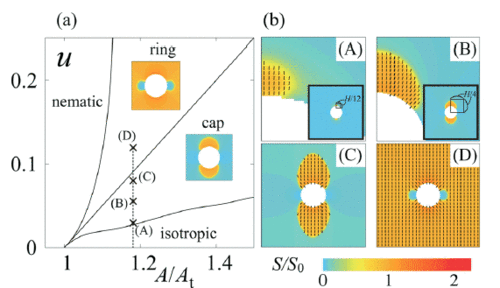

Orientational ordering is key to functional materials with switching capability, such as nematic liquid crystals and ferromagnetic and ferroelectric materials. We explored the confinement of nematic liquid crystals in bicontinuous porous structures with smooth surfaces that locally impose normal orientational order on the liquid crystal. We find that frustration leads to a high density of topological defect lines permeating the porous structures, and that most defect lines are made stable by looping around solid portions of the confining material. Because many defect trajectories are possible, these systems are highly metastable and efficient in memorizing the alignment forced by external fields. Such memory effects have their origin in the topology of the confining surface and are maximized in a simple periodic bicontinuous cubic structure. We also show that nematic liquid crystals in random porous networks exhibit a disorder-induced slowing-down typical of glasses that originates from activated collisions and rearrangements of defect lines. Our findings offer the possibility to functionalize orientationally ordered materials through topological confinement.
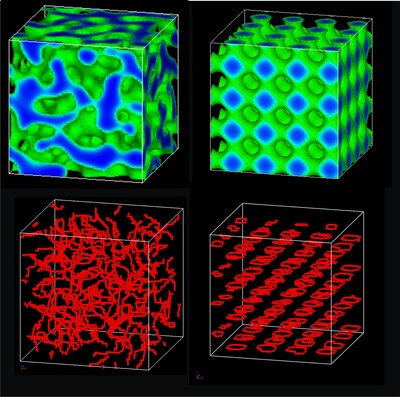
When a nematic liquid crystal is confined in a porous medium with strong anchoring conditions, topological defects, called disclinations, are stably formed with numerous possible configurations. Since the energy barriers between them are large enough, the system shows multistability. Our lattice Boltzmann simulations demonstrate dynamic couplings between the multistable defect pattern and the flow in a regular porous matrix. At sufficiently low flow speed, the topological defects are pinned at the quiescent positions. As the flow speed is increased, the defects show cyclic motions and nonlinear rheological properties, which depend on whether or not they are topologically constrained in the porous networks. In addition, we discover that the defect pattern can be controlled by controlling the flow. Thus, the flow path is recorded in the porous channels owing to the multistability of the defect patterns.
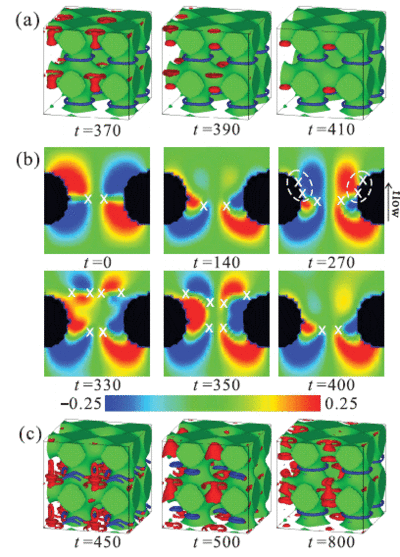
Electrophoresis and sedimentation (or ultracentrifugation) are powerful means for separating particles, proteins, and DNA, exploiting the difference in particle charge, mass, and size. Surface properties of colloids and proteins are closely related to their physical, chemical, and biological functions. Thus, the selection of particles in terms of their surface properties is highly desirable. The possibility of replacing a simple liquid like water by a complex liquid may provide a novel route to particle separation. Here we report a new principle of surface-sensitive particle selection by using nematic liquid crystal as a solvent. When we immerse a particle in nematic liquid crystal, topological defects are formed around a particle if there is a strong enough coupling between the particle surface and liquid crystal orientation (so-called surface anchoring effects). Then these defects strongly influence the motion of particles. Here we study this problem by using a novel numerical simulation method which incorporates elastic and nematohydrodynamic couplings properly. We find that the surface anchoring properties change both direction and speed of motion of a particle driven in an oriented nematic liquid crystal. This principle may be used for separating particles in terms of their surface properties.
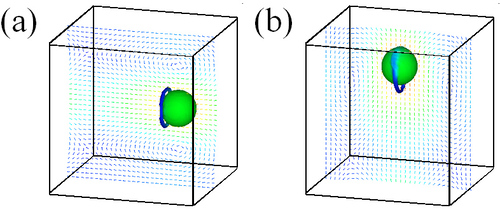
We numerically study many-body interactions among colloidal particles suspended in a nematic liquid crystal, using a fluid particle dynamics method, which properly incorporates dynamical coupling among particles, nematic orientation, and flow field. Based on simulation results, we propose a new type of interparticle interaction in addition to well-known quadrupolar interaction for particles accompanying Saturn-ring defects. This interaction is mediated by the defect of the nematic phase: upon nematic ordering, a closed disclination loop binds more than two particles to form a sheetlike dynamically arrested structure. The interaction depends upon the topology of a disclination loop binding particles, which is determined by aggregation history.
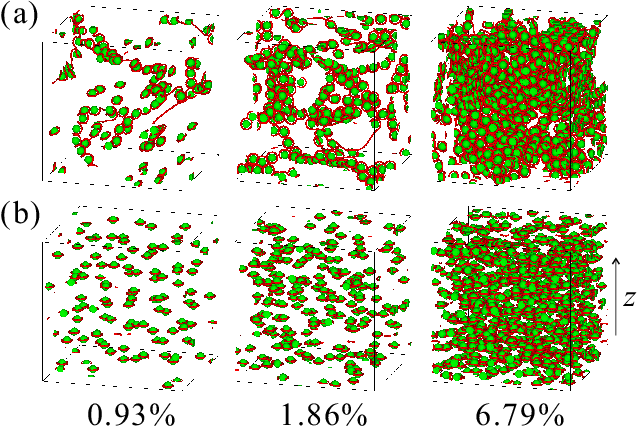
We numerically study the orientation deformations in nematic liquid crystals around charged particles. We set up a Ginzburg-Landau theory with inhomogeneous electric field. If the dielectric anisotropy \(\varepsilon_1\) is positive, Saturn-ring defects are formed around the particles. For \(\varepsilon_1\)<\(0\), novel ansa defects appear, which are disclination lines with their ends on the particle surface. We find unique defect structures around two charged particles. To lower the free energy, oppositely charged particle pairs tend to be aligned in the parallel direction for \(\varepsilon_1\)> \(0\) and in the perpendicular plane for \(\varepsilon_1\)<\(0\) with respect to the background director. For identically charged pairs the preferred directions for \(\varepsilon_1>0\) and \(\varepsilon_1\)<\(0\) are exchanged. We also examine competition between the charge-induced anchoring and the short-range anchoring. If the short-range anchoring is sufficiently strong, it can be effective in the vicinity of the surface, while the director orientation is governed by the long-range electrostatic interaction far from the surface.
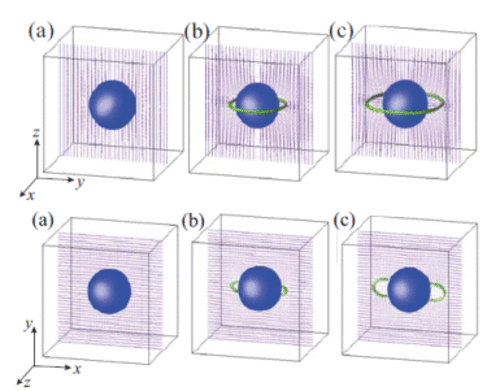
We examine the localized nematic regions (caps) on spherical colloidal particles suspended in a nematogenic liquid in the isotropic phase in the bulk by solving the Poisson equation with an orientation-dependent dielectric tensor. These caps appear and grow with an increasing applied electric field. We assume positive dielectric anisotropy of the nematogenic liquid and a high dielectric constant of the particles. Then, the electric field becomes the strongest near the poles of each particle along the field direction, leading to nematic caps. This cap formation occurs continuously for homeotropic anchoring, but is a discontinuous transition otherwise. We also discuss how the nematic caps can be observed in dielectric response, birefringence, and depolarized light scattering.
